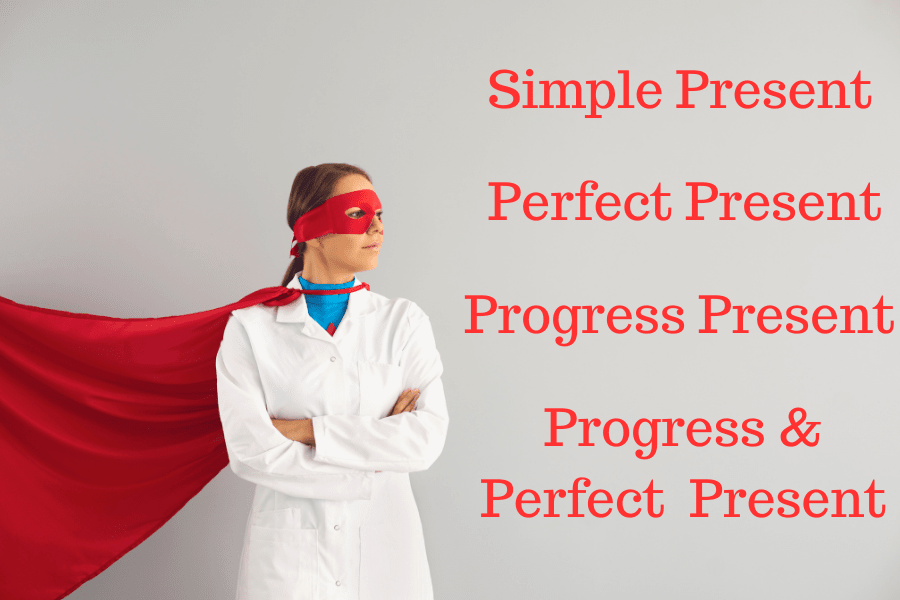Present Tenses: Introduction
Initially, as we know well English grammar contains 4 primary tenses; the simple present, present continuous, present perfect, and present perfect continuous. These tenses allow us to convey different meanings related to actions or states happening in the present time or having a connection to the present. Each tense has its own structure and usage rules.
In this article, we will walk through the four primary tenses in English grammar, the simple present, the present perfect, the present continuous, and the present perfect continuous.
Present Tenses: The Simple Present
To start with, the present simple is used to describe habitual actions, general truths, or regular occurrences. For example, “I eat breakfast every morning.” Also, it is used in certain time expressions like “always,” “usually,” “often,” etc.
Structure: Subject + base form of the verb (e.g., “I play”).
Examples:
- He speaks Spanish fluently.
- She usually wakes up at 7 AM.
Present Tenses: The Present Perfect
In general, we use the present perfect to Indicate actions that happened at an unspecified time before now or actions that have a connection to the present (e.g., “I have visited Paris before”). Also, to talk about experiences or achievements.
Structure: Subject + have/has + past participle of the verb (e.g., “I have gone”).
Examples:
- I have never been to New Zealand.
- He has already eaten lunch.
- She has not finished her homework yet.
Present tenses: The Present Continuous
This tense describes actions happening at the moment of speaking or actions in progress around the present time (e.g., “She is studying for her exam”).
Form: Subject + am/is/are + present participle (verb + -ing) (e.g., “I am playing”).
Moreover, present continuous is used for temporary actions or ongoing situations. For example:
- I’m writing an article right now.
- You are reading an essay this week.
- He is working on a new project.
Present Tenses: The Present Perfect Continuous
Lastly, the present perfect continuous may seem similar to the present perfect, but it has a slight difference. Anyways, it is used to describe actions that started in the past and are still continuing or have just stopped. For example, “I have been studying for two hours.”
Form: Subject + have/has + been + present participle (verb + -ing) (e.g., “I have been studying”).
Examples:
- I have been teaching English for 5 years.
- They have been playing football all day.
Present Tenses: Conclusion
In summary, the 4 tenses let us convey different meanings related to actions or states happening in the present time or having a connection to the present. Each tense has its own form and usage rules.
Don’t forget to generate more examples and share them in the comment section.


